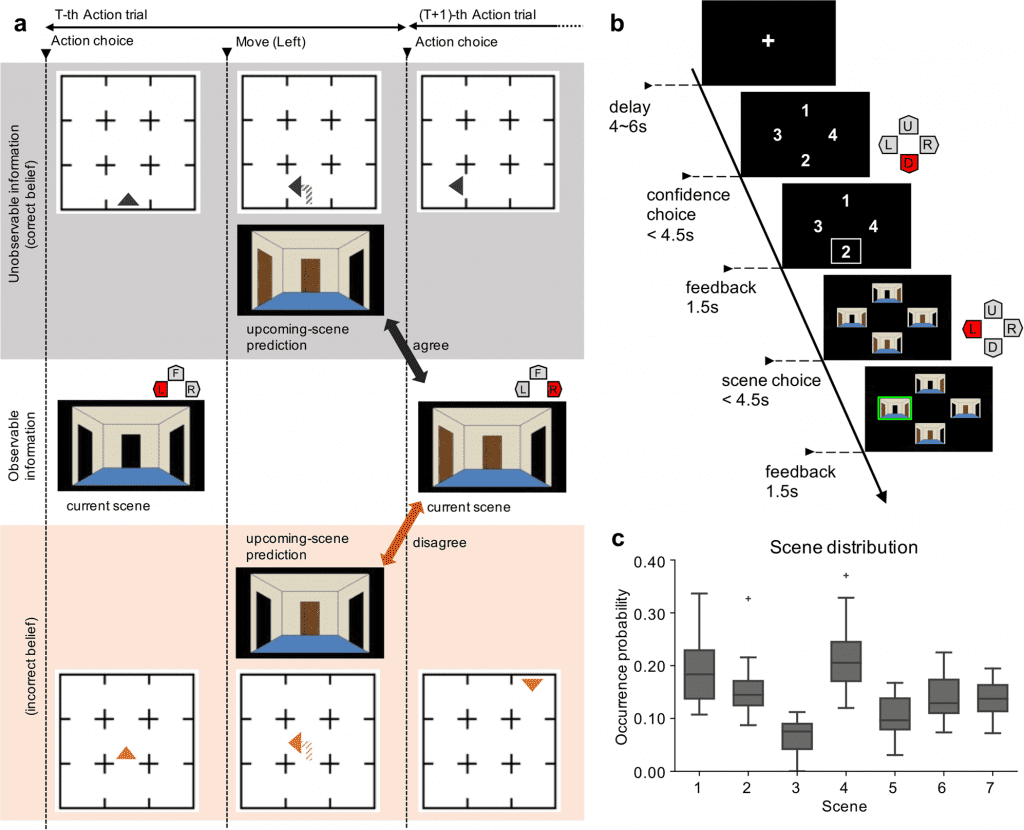Kyoto University scientists have discovered that they can decode from brain activity the subjects’ capacities to forecast their placements and scenes within the labyrinth, as well as the degree of confidence in their predictions, using partial-observation mazes in virtual reality (VR).

Image Source: https://www.kyoto-u.ac.jp/en/research-news/2022-08-04
Imagine a future in which a disaster completely destroys someone’s hometown. How quickly could the subject locate their home in the aftermath if the neighborhood gets reduced to a vast maze of rubble with few remaining landmarks?
The ability to predict events frequently involves some level of uncertainty, which is a crucial factor in determining confidence. In this study, the scientists investigated the decodability of predictions in partially observable situations when one’s state is uncertain and whether this knowledge is affected by the level of confidence that such ambiguity creates.
According to lead scientist Risa Katayama, an AI model based on human brain activity demonstrates that the scene prediction’s decoding accuracy relies on the amount of confidence in the subject’s ability to forecast.
The subject moves through a series of scenarios in the fictitious post-apocalyptic scenario by contrasting each scene prediction with the actual scene, either validating or revising the previous virtual reality.
The team looked at whether AI could decode each virtual reality experience that the subjects had in their brains and, perhaps more intriguingly, whether the subjects’ self-confidence levels had any impact on how well the predictions were reproduced.

Image Source: https://doi.org/10.1038/s42003-022-03314-y
Functional magnetic resonance imaging, or fMRI, was used to track brain activity while participants played a virtual reality maze game. Using a multi-voxel pattern analysis, the scientists successfully decoded scene predictions and subjective confidence from activities in the localized parietal and prefrontal regions. Subjects appeared to be able to use their predictions and map memory to assess their positions in the maze and determine the appropriate course of action despite not knowing the end destination.
According to the scientists, the subjects were able to see the scenario vividly and predict swiftly when prediction confidence was high.
The results of this study could have significant effects on the expanding field of metaverse research. Scene prediction, in this case, was dependent on how a maze’s doors were arranged, but it may lay the foundation for the creation of brain-machine interfaces that can communicate with humans in a variety of varied contexts.
Scene prediction can be expanded and lead to new applications, expresses Katayama. This includes control approaches that integrate human brains and AI for aerial and ground vehicles.
The scientists believe the junction of the human mind and AI has interdisciplinary relevance for further elucidating the origin of our self-consciousness.
Katayama, R., Yoshida, W. & Ishii, S. Confidence modulates the decodability of scene prediction during partially-observable maze exploration in humans. Commun Biol 5, 367 (2022). https://doi.org/10.1038/s42003-022-03314-y https://www.kyoto-u.ac.jp/en/research-news/2022-08-04
Learn More About Bioinformatics:
Top Bioinformatics Books ↗
Learn more to get deeper insights into the field of bioinformatics.
Top Free Online Bioinformatics Courses ↗
Freely available courses to learn each and every aspect of bioinformatics.
Latest Bioinformatics Breakthroughs ↗
Stay updated with the latest discoveries in the field of bioinformatics.
Dr. Tamanna Anwar is a Scientist and Co-founder of the Centre of Bioinformatics Research and Technology (CBIRT). She is a passionate bioinformatics scientist and a visionary entrepreneur. Dr. Tamanna has worked as a Young Scientist at Jawaharlal Nehru University, New Delhi. She has also worked as a Postdoctoral Fellow at the University of Saskatchewan, Canada. She has several scientific research publications in high-impact research journals. Her latest endeavor is the development of a platform that acts as a one-stop solution for all bioinformatics related information as well as developing a bioinformatics news portal to report cutting-edge bioinformatics breakthroughs.











